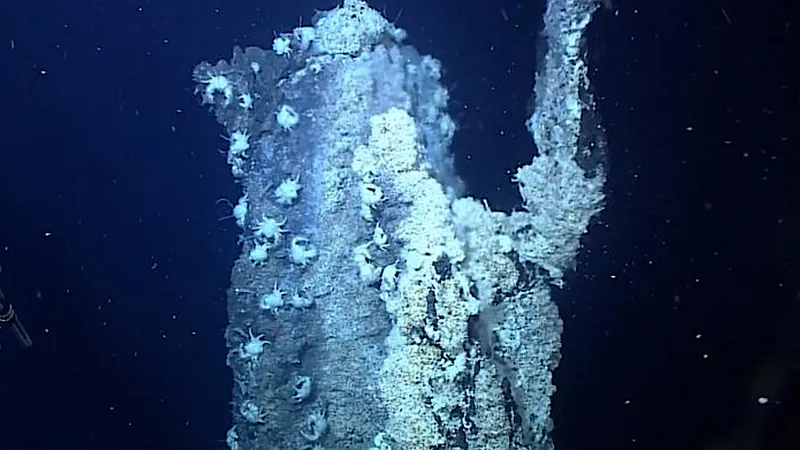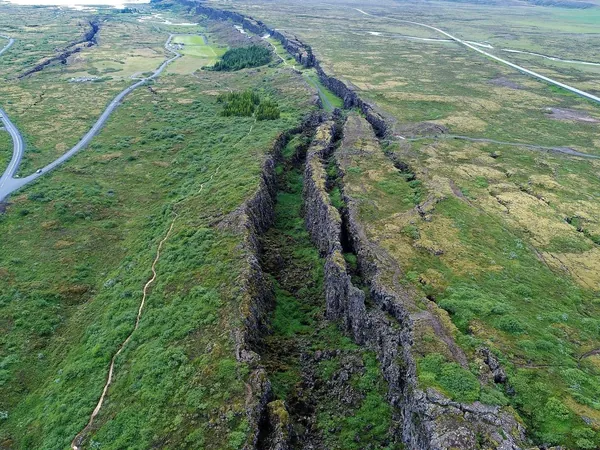
Unbelievable Survival: How a Deep-Sea Worm Thrives in Toxic Hydrothermal Vents
2025-08-30
Author: Charlotte
Meet the Incredible Paralvinella hessleri
Deep beneath the Pacific Ocean, a remarkable creature known as Paralvinella hessleri defies the odds by thriving in one of the harshest environments on Earth—hydrothermal vents that spew toxic arsenic and sulfide.
The Secret to Survival
This extraordinary worm has developed a unique survival strategy. Researchers from the Institute of Oceanology in China discovered that P. hessleri can transform high levels of dangerous arsenic and sulfide into a less harmful mineral within its own cells. This process was unveiled in a groundbreaking study published in the journal *PLOS Biology*.
Transforming Poison into Safety
The secret lies in its remarkable ability to accumulate arsenic in its skin cells. When this toxic element interacts with sulfide in the warm vent fluids, it forms orpiment—a yellow mineral that is far less harmful. This phenomenon allows the worm to flourish despite the lethal surroundings.
A Stunning Discovery
Lead researcher Chaolun Li and his team utilized advanced microscopy and chemical analyses to unveil this novel detoxification method. Their findings highlight a process referred to as 'fighting poison with poison,' which allows P. hessleri to exist and even thrive in an extreme environment.
Art and Science Converge in the Deep Sea
Coauthor Dr. Hao Wang recounted his astonishment during his first deep-sea expedition, noting how the bright yellow P. hessleri stood out against the dark, mineral-laden backdrop of the vents. Fascinatingly, the orpiment produced by this worm was once a prized pigment used by medieval painters, linking the realms of biology and art history in an unexpected way.
A Deeper Understanding of Marine Life
The research team expressed their hope that this finding would inspire scientists to rethink how marine organisms interact with toxic elements in their environment. This ‘poison-conversion’ strategy may be more common among marine invertebrates than previously thought.
Exploration of a Hidden World
As we delve deeper into our oceans, discoveries like that of Paralvinella hessleri remind us of the resilience of life—and its ability to adapt in the most unimaginable ways. What other secrets lie beneath the waves, waiting to be uncovered?









 Brasil (PT)
Brasil (PT)
 Canada (EN)
Canada (EN)
 Chile (ES)
Chile (ES)
 Česko (CS)
Česko (CS)
 대한민국 (KO)
대한민국 (KO)
 España (ES)
España (ES)
 France (FR)
France (FR)
 Hong Kong (EN)
Hong Kong (EN)
 Italia (IT)
Italia (IT)
 日本 (JA)
日本 (JA)
 Magyarország (HU)
Magyarország (HU)
 Norge (NO)
Norge (NO)
 Polska (PL)
Polska (PL)
 Schweiz (DE)
Schweiz (DE)
 Singapore (EN)
Singapore (EN)
 Sverige (SV)
Sverige (SV)
 Suomi (FI)
Suomi (FI)
 Türkiye (TR)
Türkiye (TR)
 الإمارات العربية المتحدة (AR)
الإمارات العربية المتحدة (AR)